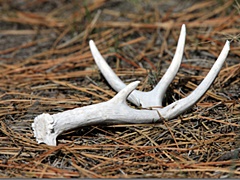
Welcome to Hemlock and Canadice Lakes!
Barns Businesses Cemeteries Churches Clinton & Sullivan Columns Communities Documents Events Time Line Fairs & Festivals Farm & Garden Hiking Homesteads Lake Cottages Lake Scenes Landscapes Library News Articles Old Maps Old Roads & Bridges Organizations People Photo Gallery Podcasts Railroad Reservoir Schools State Forest Veterans Videos
|
“Nature in the Little Finger Lakes” by Angela Cannon Crothers |
|
|
Searching for Sheds Angela Cannon-Crothers April 2017 Spring. The salamanders already emerged and I have even heard a woodcock peenting, but today the wind is blustery with snow. “Maybe you should try looking over here!” Lou shouts from across the fields. I walk toward the edge of the turnip field, looking carefully for some sort of fracture of grey-white within the powder-white of light snow. “You have to slow down, look carefully,” Lou adds, and then tells me to come closer his way. When I see the four tines of a large single antler frozen to the ground, I give a little yelp. Then I laugh because I realize that Lou, of course, had found the shed first and was merely guiding me to it. Bucks shed their antlers anywhere from winter to early spring. Searching for sheds is akin to finding hidden figures in a Bev Doolittle painting, camouflaged within the landscape, teaching you to see what is actually there. One must learn to spot a change of shape within a rocky field, or a shade of color different from those of branches on the forest floor. It seems like magic to find one, but Lou knows where to look—near feeding areas, along deer trails and bedding areas. Mastery of the mystery I guess, but antlers do contain many myths. Antlers are a symbol of regeneration, spiritual authority, and survival—maybe because to find one is a sign that the buck made it through hunting season. In Celtic lore, deer were herded by fairies and antlers symbolized prosperity, growth, and spring fertility. Male deer over a year in age, when hormones kick in, begin to grow antler “beams” from blood-flowing pedicles on their crowns come spring. Antlers are honeycombed, bone-like tissue covered with a velvet that supplies nutrients and minerals via nerves and blood vessels. Antlers are some of the fastest-growing bones known. In a season of lush greens from rich soil, more than 200 inches of antler can grow in about 120 days. Each set of antlers is unique to the deer who grows them. None are identical. A buck’s rack represents his age, genes, diet, the soil health, and stress in his environment. Antler size helps assure their genes will be passed on. But big racks only come from healthy herds. In wintertime, when there is a drop in testosterone hormones, the pedicle at the base of the antler begins to weaken and close off. Like a tree closing off nutrients to its leaves in the fall, the antler dies and then, molts. The process can take two to three weeks. Mice, birds, squirrels, porcupines, foxes—and even bears—will peck, gnaw, chew, drill, and maw the drops because they are rich in minerals like calcium and phosphorous. “Glassing for tines” is the expression used when one uses the aid of binoculars to search a winter field of corn or clover from the comfort of one’s truck. Antlers have many uses. They can be boiled and strained for a gelatin to use in jellies, or fire baked and ground to use as a baking powder, sawed and drilled for buttons, made into knife handles, rattling antlers, chandeliers, lamps, jewelry, toggles, coat or towel racks, toilet paper holders, dog treats, centerpieces, a cribbage board, or sold for money. I find three more antlers (actually, Lou guides me to the match of my four-pointer and I think I find the third—a small three-tine antler in the saw grass, all on my own, but I’m not so sure). As we start heading back I see the figures of deer leaping past the thin trunks of trees beyond the field. “Look!” I tell Lou, pointing, excited I saw something before he did this time. Then I see something even more amazing—a buck still in full rack, running along with the rest. I wonder if the fairies are rustling up the herd, showing me a reason to come search for sheds again, later this spring. Maybe, too, they are encouraging me in my practice of this art of seeing.
|
||
|
Editor’s Note: Angela Cannon Crothers is a naturalist and writer who teaches at Finger Lakes Community College and with The Finger Lakes Museum. Here are some columns that she has written about the Little Finger Lakes. Her columns also appear in the Lake Country Weekender newspaper.
|
||
